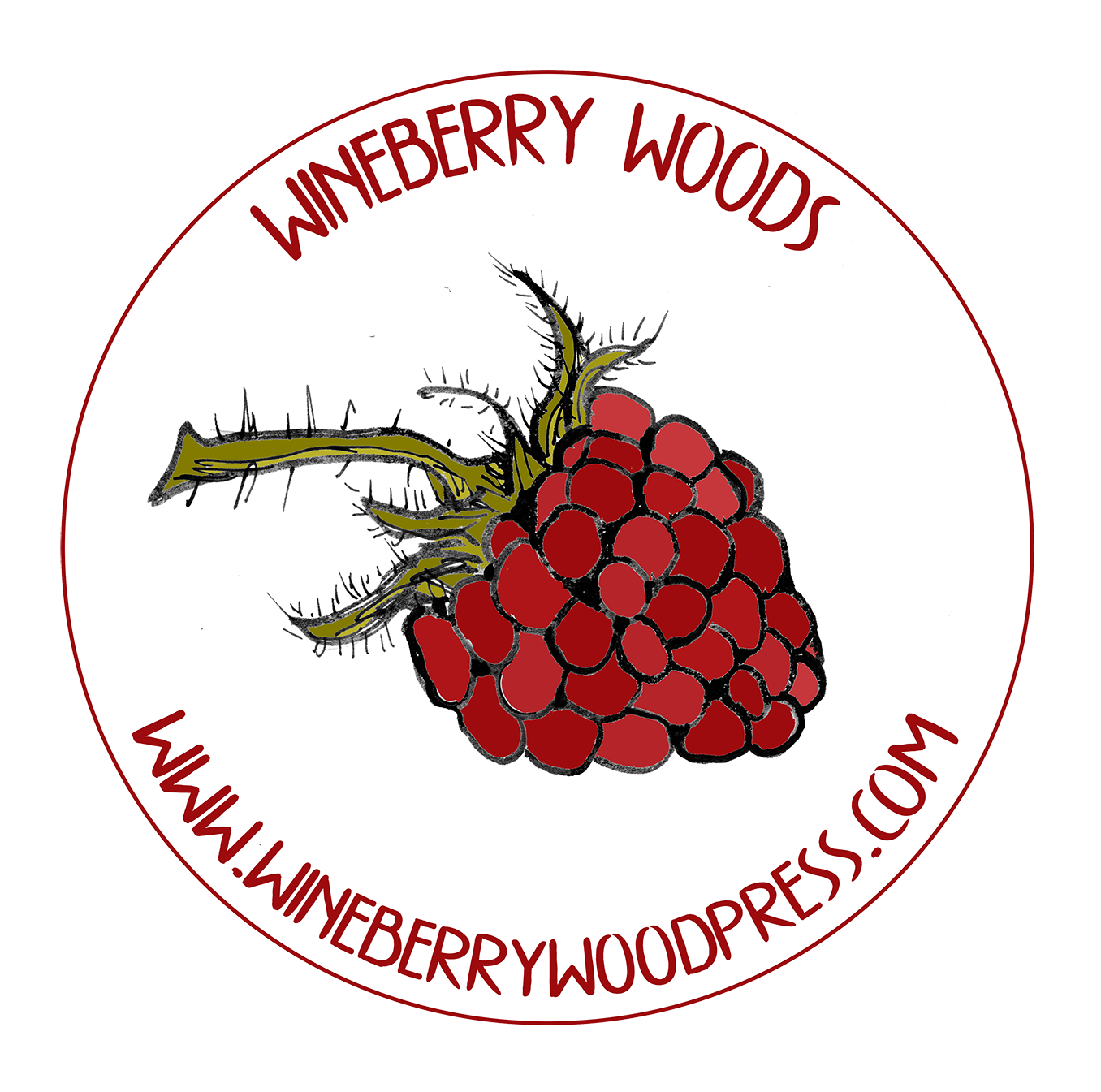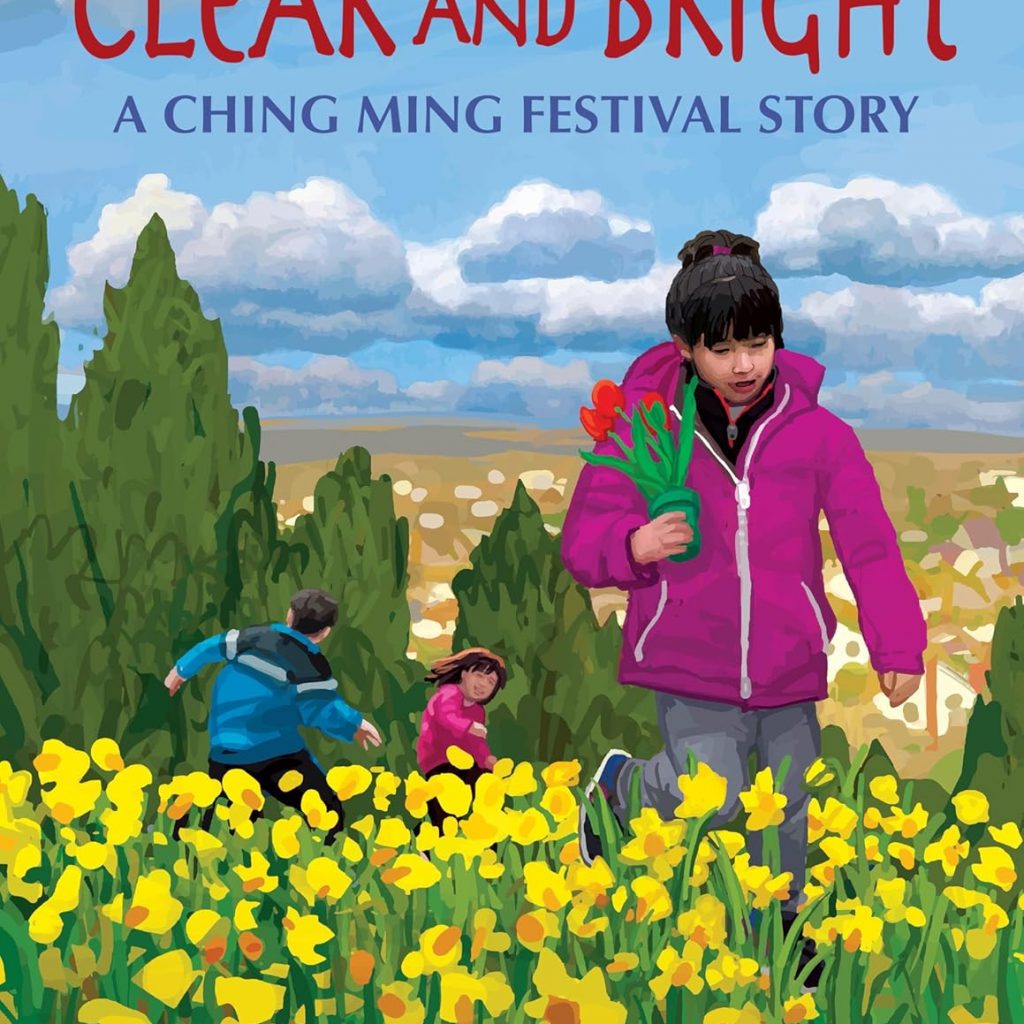
Picture Book Buds are a fun and easy way to incorporate literacy into nature study. Read a book (you can even read it outside!) and then enjoy the related activity and snack suggestions!
Clear and Bright: A Ching Ming Festival Story
Written by: Teresa Robeson Illustrated by: William Low
Clear and Bright: A Ching Ming Festival Story is a lovely, lyrical story about a family celebrating the Ching Ming Festival. This is a spring festival right around the same time as spring equinox that has been on my radar for some time, but that I didn’t previously know very much about. When I came across this picture book I jumped at the chance to learn more. If you have read much of my work than you may have noticed that I am completely fascinated by the way disparate cultures in temperate climates all over the world have similar holidays at similar times. There is always a harvest festival in fall, something around the winter solstice, or in this case the spring equinox. It is how I like to observe the wheel of the year, not through the lens of a particular culture or specific customs, but as a human marveling at the wonders of nature the same way humans have done all over the world for eons. Clear and Bright tells the story of a family celebrating Ching Ming by cleaning their house, making a feast and visiting their ancestors graves. Ching Ming, the story tells us, translates to “Clear and Bright”. Ching Ming is observed by ethnic Chinese people in Southeast Asia and beyond. It is a celebration of spring and falls on the first day of the fifth solar term of the traditional Chinese lunisolar calendar. This makes it approximately the 15th day after the Spring Equinox. This picture book is a perfect introduction to the holiday if you are interested in learning more about Ching Ming, a great resource if your family already celebrates, or a fun way to learn more about traditional spring celebrations.
Thank you to Astra Young Readers for providing this book for review consideration. All opinions are my own.
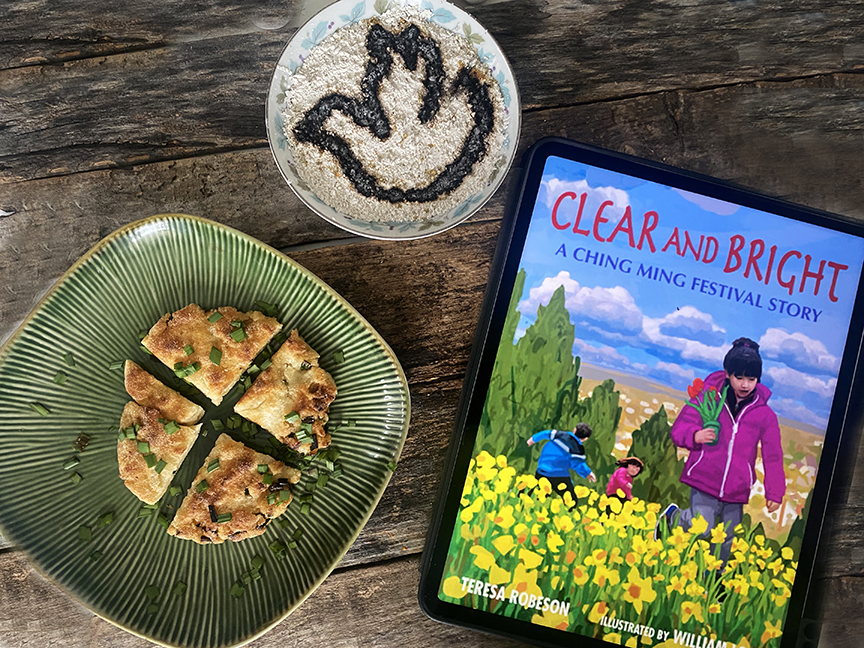
Craft:
Crow Trinkets
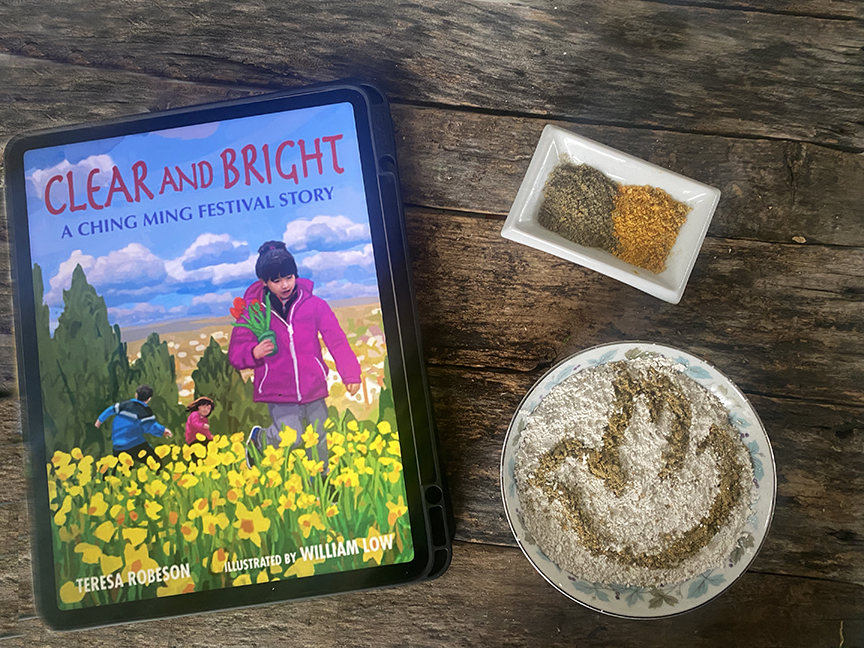
The child narrating the story mentions joss sticks, but they don’t feature prominently in the book. I came across them over and over while researching Ching Ming however, and decided to merge them with another project I had been working on. (I love a mash-up!) Joss sticks are a type of incense that are burned to remember and honor ancestors during festivals. I had been experimenting with a loose incense that creates a picture and decided it would be a fun project to accompany this story. While you may celebrate Ching Ming with your family if it is a part of your culture, you also may just be interested in different customs from around the world. This incense project is just a fun way to honor the spirit of the festival and in no way a traditional part of Ching Ming. (It is also not a traditional offering to ancestors unless you decide to use it that way!) The incense is made of damiana, a North American herb that has been long been used as incense and is said to bring peace, and mandarin orange peels which represent good luck in Chinese folklore. I felt that the world could use a little more peace of late, so doubled down and made the incense trail in the shape of a dove. Incense trails are channels dug into white ash that are filled with loose incense to create a path or shape. You light one end and it slowly burns through the picture. They are incredibly relaxing to watch and the scent of the damiana and orange was beautiful. You can can sift a little more white ash over most of the picture so that it is a surprise as it burns, but I found that I didn’t want to obscure it. Incense trails are similar to the pressed incense designs that have become popular of late, but require less tools and are simpler to make.
Materials:
- dried damiana herb
- dried mandarin orange peels
- spice grinder
- white ash*
- dove template (linked below, or draw your own!)
- small heat safe bowl
- dull pencil or chopstick
- commercial incense stick or match
Method:
First grind the damiana to a powder in a spice grinder. Tip it into a bowl and repeat with the orange peel. You may have to break it up a little to get it to fit into the spice grinder.
I made my mixture about 50% damiana and 50% orange, but you can blend it however it smells best to you. I find the orange lights a little better so don’t completely exclude it.
Now get the incense trail ready. Put a reasonably even layer of white ash into a small heat safe bowl. You don’t need to smooth down the top, you just want it more or less level.
Now use the pencil to scrape your design into the ash. You can use the template below as a guide, or you can draw freehand. If you make a mistake you can smooth it over and start again. You are looking for a channel in the ash that is one unbroken line and makes a picture. (You are using the pencil to scratch into the ash, not to make a pencil line)
Once you are pleased with your design place the incense into the channel you have just made. I tried a few different ways to do this, but just carefully placing pinches of it seemed to work best. You can use your pencil to push any stray herbs back into place.
Once you are finished and ready to light the incense, use a lit stick of commercial incense or a match to light the end of the design. (The end of the line by the tail.) It will not flame up, it will just start to smolder. (I think it goes without saying that this is strictly an adult job!)
Relax and enjoy watching the picture change!
*NOTE: I spent more time than I would like to admit trying to determine if white ash is in fact ash and found wildly contradictory answers. I think it’s worth testing with sifted ash from a fire, but I haven’t gotten to it yet.
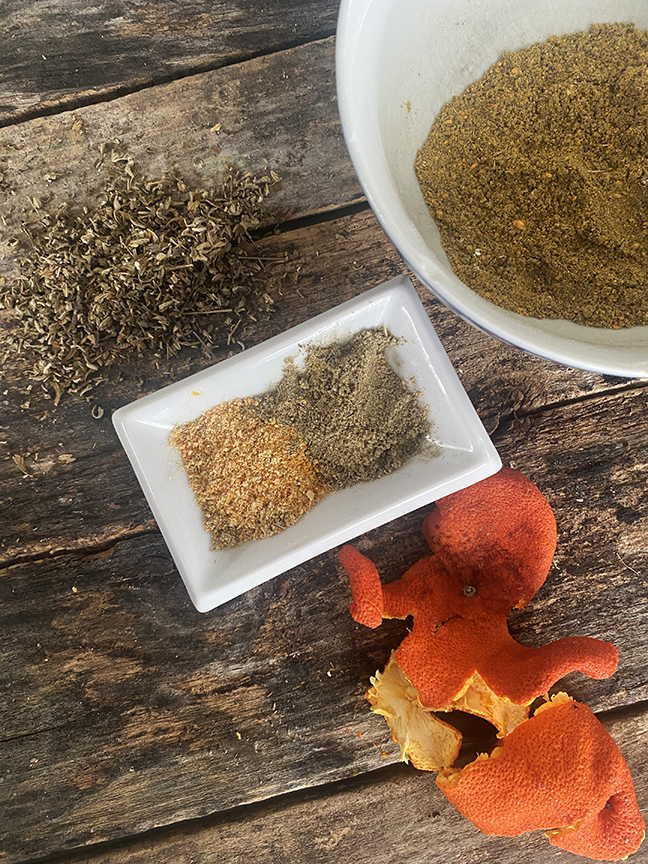
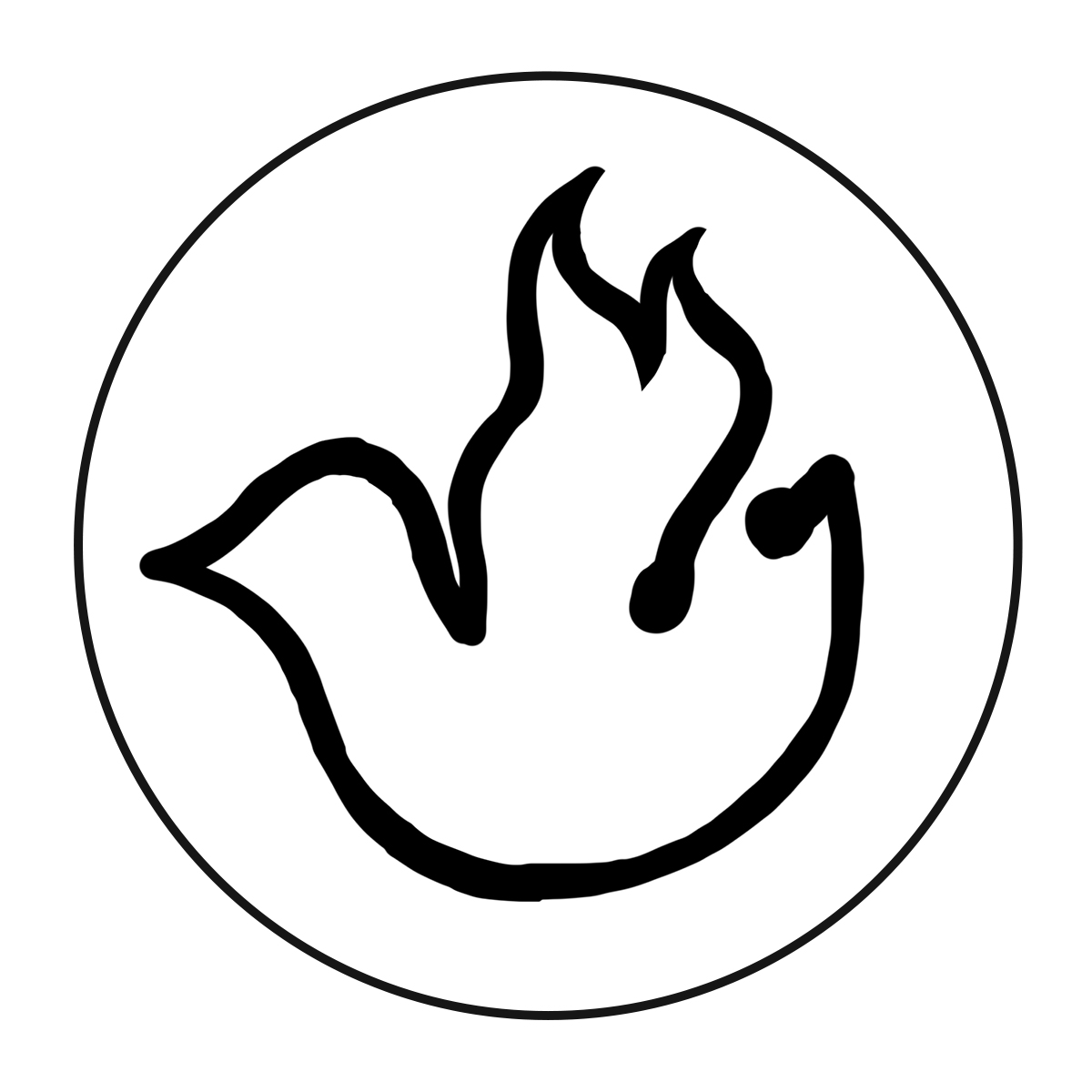
Snack:
Gluten Free Wild Onion Pancakes
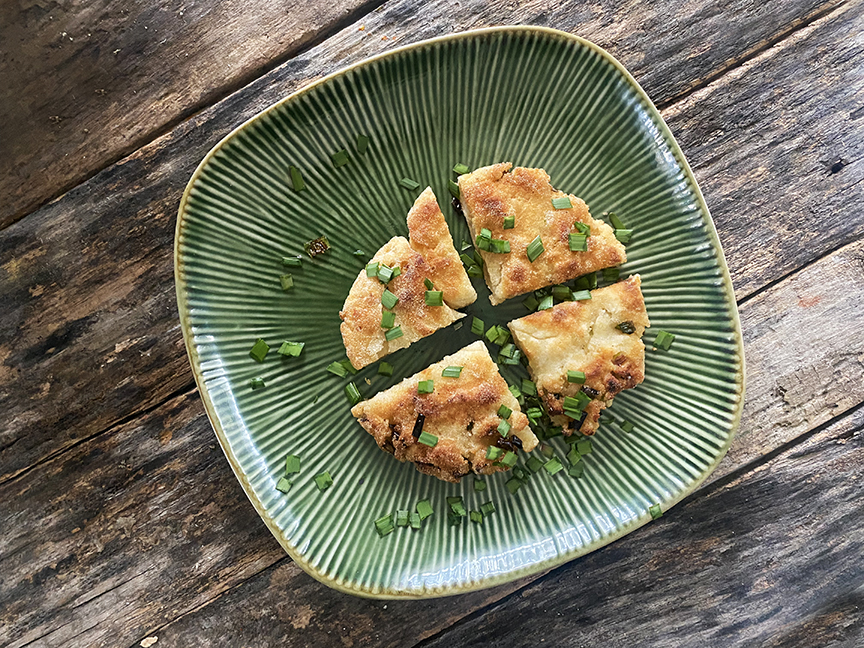
I love scallion pancakes. I probably still had wild onions on the brain after reading When We Gather too. So when I saw that pancakes are a traditional Ching Ming food, even though it’s a different type of pancake, I couldn’t get scallion pancakes out of my head. I also haven’t had a scallion pancake since discovering that I was a celiac many years ago. I decided this was my sign. Chinese style pancakes use a boiling water dough which doesn’t so much rely on the wheat-y-ness of wheat so I suspected it was doable. I am extremely pleased to say that I was right. I actually wished I had tried this years ago, because it wasn’t all that hard to make and it made me really happy. Being essentially a fried dough they are a big hit with kids too. I used foraged wild onions here in honor of spring, but the obvious swap would be more scallions or even chives. I based this recipe on a gluten filled one by James Beard Award winning chef Susanna Foo which I would recommend if you are not looking for a gluten free recipe. The other change I made to her recipe was to swap out the pork fat in the filling because it’s not something I tend to keep on hand. I used butter which tasted great, but smoked a lot in the hot oil. Next time I will try ghee or coconut oil or even the traditional pork fat.
Ingredients:
gluten free boiling water dough:
- 75 g sweet rice flour
- 75 g tapioca flour
- 70 g millet flour
- 1 1/2 tsp xanthan gum*
- 1/2 tsp salt
- 1/2 cup boiling water
- 2-4 TBS room temp water
filling:
- 1/2 bunch scallions chopped
- a handful of wild onions (chopped sub chives or more scallions)
- 1/4 cup pork fat, butter, ghee or coconut oil at room temperature (butter will smoke)
- 1 TBS sesame oil
- 1 tsp salt (or to taste)
Method:
Start by making the filling. Add the scallions, wild onions, soft fat, oil and salt to small bowl. Mix until well combined.
Next make the dough. Stir together the flours, xanthan gum and salt in a heat proof bowl.
Pour in the boiling water and stir with a fork to combine. Add the room temperature water a TBS at a time until a soft dough forms. (You may ir may not need all of it- I did.) You can knead it a bit in the bowl to get it to come together.
Typically a wheat dough is rested at this point, but this dough is easiest to work with when it’s still warm so make it when you are ready to form the pancakes. (That is also why we made the filling first.)
make the pancakes:
Cut the dough into 8 even-ish pieces. One at a time, roll each piece into a thin oval around a 1/8 inch thick. I like to do this between two pieces of parchment, you can also use a little sweet rice flour to prevent sticking.
Spread around 1 TBS of the filling over the oval leaving a little edge around the outside.
Now roll it up like a jelly roll. This is where I diverge from the traditional process a little because the gf fough is not as flexible as a wheat one would be. Pinch the ends closed and squish the rolled dough out a little so it’s a slightly longer worm shape. You can twist it a little, but I found it didn’t hold well to the usual twisting. It’s ok if it tears a little.
Now roll your worm shaped dough into a tight snail shape and place it on a baking sheet. smoosh it down a little with your hands and then roll it to around a 1/4 inch. It should be reasonably circular, but doesn’t need to be perfect.
Repeat with the other 7 pieces.
Heat a frying pan over medium heat and add some neutral oil. Fry the pancakes for 2 to 3 minutes per side until they are crispy and golden. Drain on paper towels and serve hot. I like to dip them in soy sauce.
*NOTE: I am not convinced the xanthan gum was contributing much and will re-test with psyllium.
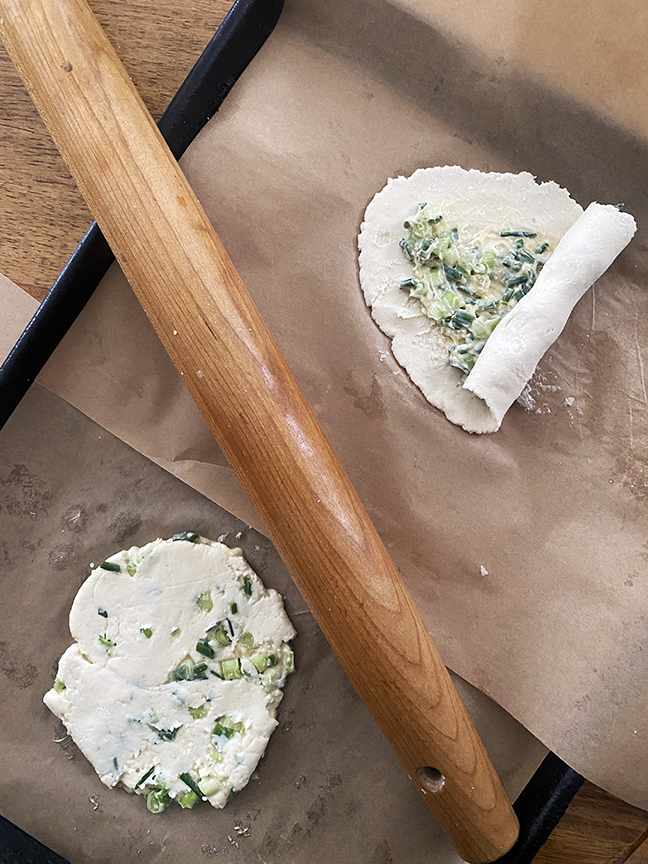
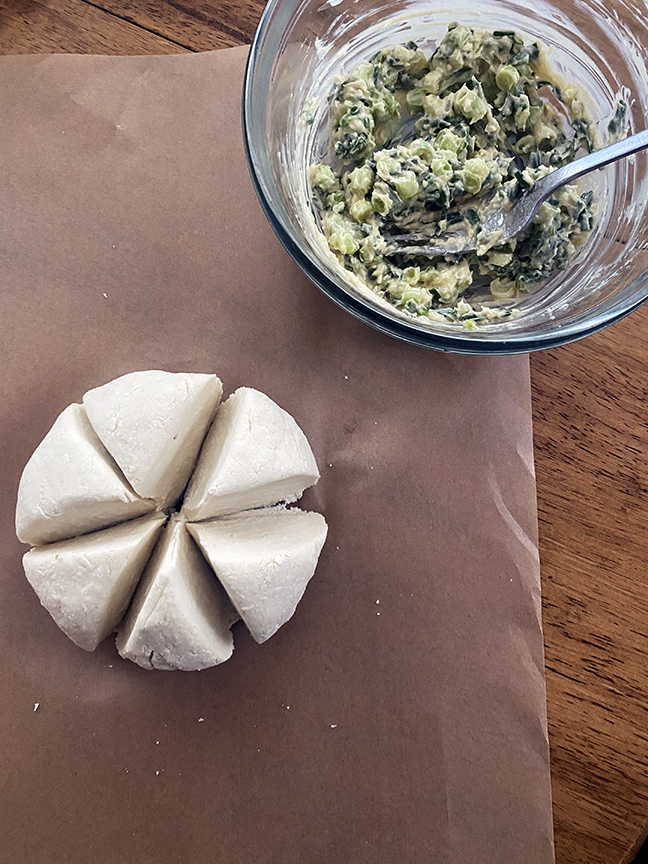
Nature Play:
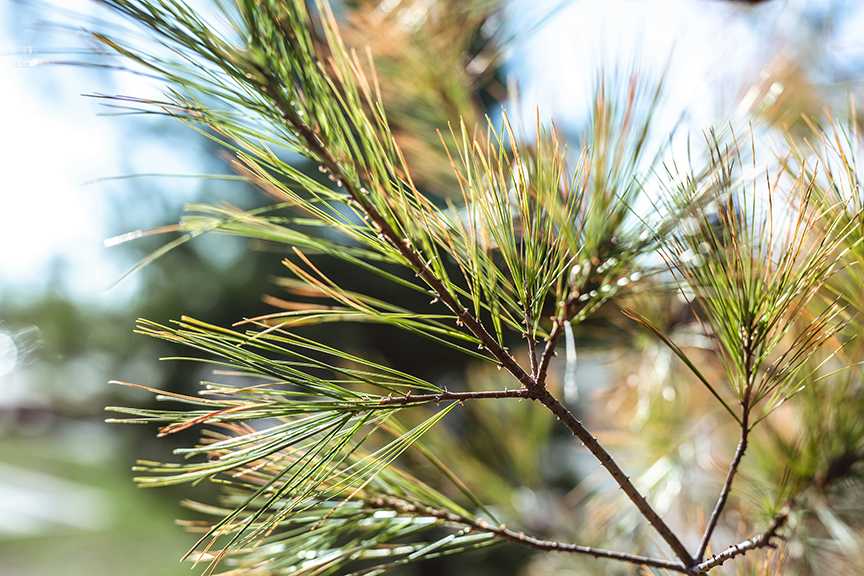
The beginning of the book, the family is cleaning their home and indeed the idea of “spring cleaning” seems to be a common one. So why not do some cleaning with natural materials? Younger friends can use pine branches to sweep teh ground outside, which for reasons that escape me nearly every child I have ever met loves. Older kids can make a pine infused vinegar to bring the outdoors in!
